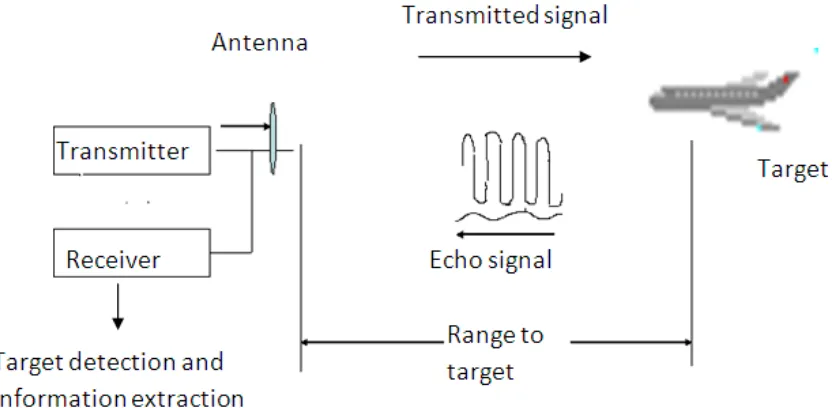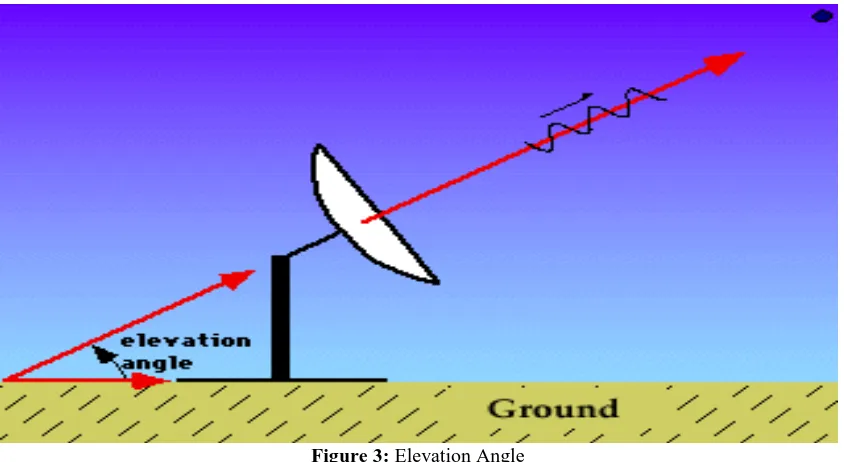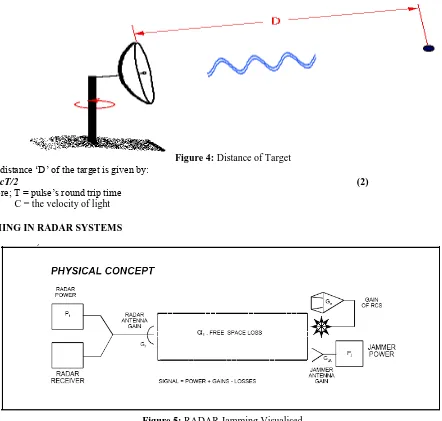Volume 8, No. 9, November-December 2017
International Journal of Advanced Research in Computer Science
RESEARCH PAPER
Available Online at www.ijarcs.info
A MINI REVIEW ON RADAR FUNDAMENTALS AND CONCEPT OF JAMMING
P Anjaneyulu, B Annapurna, P Haribabu, T Vijetha & R Karthik
Department of Electronics and Communication EngineeringMLR Institute of Technology, Hyderabad-500043, India
Abstract: This paper presents a mini review on the basics of Radars. The parameters considered for determining the target location are explained in detail. Also the concept of Jamming and various types are explained in detail.
Keywords: Antenna, Radar, Jamming, Communication
1. INTRODUCTION
RADAR is an object detection system that uses electromagnetic waves to identify the range, altitude, direction, or speed of both moving and fixed objects such as aircraft, ships, motor vehicles, weather formations, and terrain [1].
A Radar system has a transmitter that emits microwaves or radio waves. These are reflected by the target back to a receiver, usually in the same location as the transmitter. Although the signal returned is usually very weak, the signal can be amplified and displayed. This enables Radar to detect objects at ranges where other emissions, such as sound or visible light, would be too weak to detect. Radar is used in
meteorological detection of precipitation, measuring ocean surface waves, air traffic control, police detection of speeding traffic, and by the military.
[image:1.595.95.511.447.651.2]RADAR basically consists of transmitter, receiver and antenna. The transmitter generates an electromagnetic signal, which is radiated into space by an antenna [2]. The antenna is usually shared on a time-shared basis. A portion of the transmitted energy is blocked by the target and reradiated or reflected in many directions. This is collected by the Radar antenna, which delivers it to the receiver. The receiver then processes it to detect the presence of the target and to determine its location. The principle of Radar is as shown in figure 1.
Figure 1: RADAR Principle
The electronics principle on which Radar operates is very similar to the principle of sound-wave reflection. If you shout in the direction of a sound-reflecting object (like a rocky canyon or cave), you will hear an echo. If you know the speed of sound in air, you can then estimate the distance and general direction of the object. The time required for a return echo can be roughly converted to distance if the speed of sound is known. Radar uses electromagnetic energy
pulses in much the same way, as shown in figure 1. The radio-frequency (RF) energy is transmitted to and reflects from the reflecting object. A small portion of the energy is reflected and returns to the Radar set. This returned energy is called an ECHO, just as it is in sound terminology. Radar sets use the echo to determine the direction and distance of the reflecting object.
Received Power = Transmitted Power X Fraction of transmitted power that is reflected To receiver X Fraction of reflected power that is intercepted by Receiving antenna
(1)
For determining the target location three pieces of information are required [2]: 1. Azimuth Angle
2. Elevation angle 3. Distance to target.
[image:2.595.120.501.236.451.2]Azimuth Angle:
Figure 2: Azimuth Angle
The azimuth angle is nothing but angle of ‘beam’ with respect to the North.
Elevation angle
2 2 3
2
)
4
(
t rB r t t r
R
R
g
g
P
P
[image:2.595.99.521.510.741.2]Distance of Target
Figure 4: Distance of Target The distance ‘D’ of the target is given by:
D = cT/2 (2)
Where; T = pulse’s round trip time C = the velocity of light
2. JAMMING IN RADAR SYSTEMS
Figure 5: RADAR Jamming Visualised
Electronic Counter Measures (ECM) is that division of electronic warfare involving actions taken to prevent or reduce an enemy's effective use of the electromagnetic Spectrum [3, 4]. Radar Jamming is an Electronic Counter Measure (ECM) technique to prevent, delay, or confuse the Radar processing of target information. There are many methods and techniques to jam Radar receiver.
Jamming can be classified as based on presence of internal radiation source as: Active jamming
Passive jamming
Jamming also can be classified based on property of jamming function as: Suppression jamming
Deception jamming
Deception jammer senses the incoming radar signals and replicates the simulated target echoes in order to confuse radars, hindering the ability to identify true targets from false targets [5].
Basically, there are two different methods of employing active ECM against hostile radars: Self Protection ECM
Support ECM
Fig.6: Self Protections and Escort Jamming [7]
3 SELF PROTECTION ECM
Self Protection ECM is often called "self screening jamming" and also "DECM", which is an acronym for either "Defensive ECM" or "Deception ECM". Deception uses ECM to forge false target signals that the radar receiver accepts and processes as real targets.
Fig.7: SIJ & SOJ
3.1 Active Suppression Jamming
Active suppression jamming can beclassified as modulation wave and non-modulation wave jamming [6, 7]. Non-modulation wave jamming is used rarely as its effect is poor. Modulation wave jamming can be classified as regular signal modulation and noise modulation. Regular signal modulation includes sine, pulse, and sawtooth modulation. Noise modulation includes noise amplitude modulation, noise frequency modulation and synthetic modulation jamming of noise amplitude and frequency. They are widely used for they can generate large power and wideband jamming signal.
true and false targets or interpret a false target as a true target [6]. Generally there are angle deception, range deception, and velocity deception jamming against tracking Radar. Against warning and guidance Radar, however, there is false target jamming.
3.3 Passive Jamming
This technique uses special made material (Radar cross section reduction (RAM)) to reflect electromagnetic waves or change the travel condition to jam Radar [6].
REFERENCES
1. I. Merrill Skolnik, “Introduction to RADAR systems”, Tata
McGraw-Hill publishing company limited. Singapore, 3rd
edition 2001.
2. A.K Subramanian, “Jamming primer”, Defense Scientific
Information & Documentation Center Defense Research & Development Organization Ministry of Defense , India,2nd
edition, 2003.
3. A. K Subramanian, “Modeling Radar-ECCM A System
Approach”, Defense Scientific Information & Documentation
Center Defense Research & Development Organization Ministry of Defense, India, 2nd edition 2003.
4. L.Stephen Johnston, “Radar Electronic Counter-Countermeasures”, IEEE Transaction on Aerospace and Electronic Systems, Vol-14, pp.1-8, 1978.
5. “A Survey of Radar ECM and ECCM”, IEEE Transaction on Aerospace and Electronic Systems, Vol 31, No.3, pp. 1-6, 1995.


